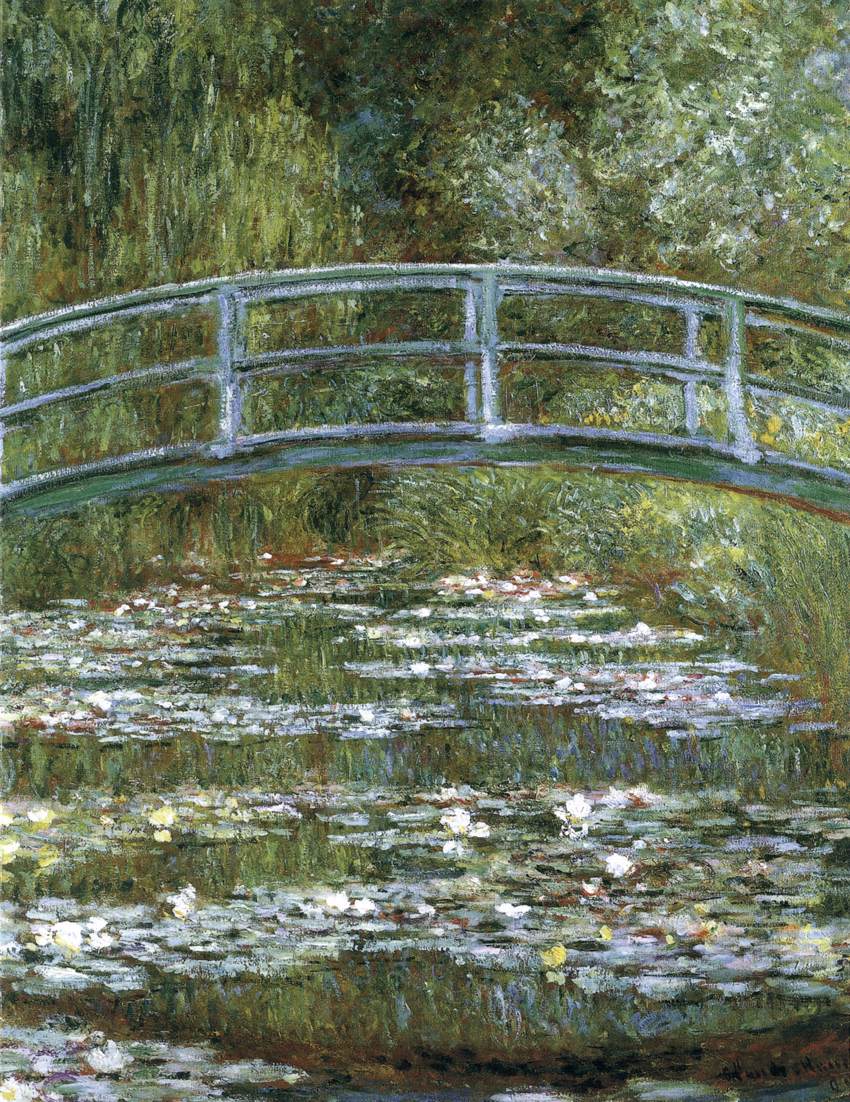Description
The painting Bridge over a Pond of Water Lilies by Claude Monet is one of the most iconic works of French Impressionism. This work represents a wooden bridge that crosses a pond full of water lilies and surrounded by vegetation. It is a work that stands out for its artistic style, its composition, its color and its history.
Monet's artistic style is characterized by his technique of loose, rapid brushstrokes that create a sense of movement and lightness in the work. In Bridge over a Pond of Water Lilies, Monet uses this technique to create an effect of light and shadow on the water and on the water lilies, making the painting appear more realistic.
The composition of the work is also very interesting. Monet uses the bridge as a central element that divides the work into two parts. At the top, you can see the trees and vegetation surrounding the pond, while at the bottom, you can see the water and the water lilies. This composition creates a sense of depth in the work and makes the viewer feel as if they are looking across the bridge to the other side of the pond.
Color is another important aspect of the work. Monet uses a soft, pastel color palette to create a sense of calm and serenity in the work. Green and blue tones predominate in the work, making the water and water lilies appear more alive and vibrant.
The history of the painting is also interesting. Monet painted Bridge over a Pond of Water Lilies in 1899, when he was already an established artist. The work is part of a series of paintings that Monet made of the water lilies in his garden at Giverny, where he lived for much of his life. This series of paintings is considered one of the masterpieces of French Impressionism and is highly valued by art collectors.
In summary, Bridge over a Pond of Water Lilies is an impressive work of art that stands out for its artistic style, its composition, its color, and its history. It is a work that represents the beauty of nature and continues to be a source of inspiration for artists around the world.

